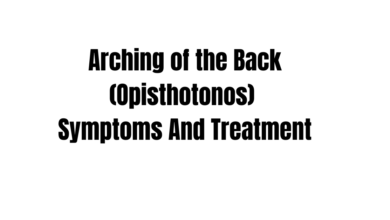Tetanus and Natural Disasters: Preparedness and Response
Introduction
Natural disasters, such as earthquakes, hurricanes, floods, and tornadoes, can result in widespread injuries and pose significant health risks. One of the potential dangers associated with these disasters is the increased risk of tetanus infection. In this article, we will explore the importance of tetanus preparedness and response in the context of natural disasters, providing valuable insights and guidance for individuals and communities to protect themselves in emergency situations.
The Tetanus Risk in Natural Disasters
Natural disasters often lead to injuries, including wounds caused by debris, sharp objects, and contaminated water. These types of injuries, if not properly managed, can provide an entry point for tetanus-causing bacteria, specifically Clostridium tetani. The lack of access to clean water, medical facilities, and appropriate wound care resources further exacerbates the risk of tetanus infection in disaster-stricken areas.
Tetanus Preparedness Measures
- Vaccination: Ensuring up-to-date tetanus vaccination is a crucial step in tetanus preparedness. Tetanus shots, known as tetanus toxoid vaccines, provide long-lasting immunity against the infection. It is recommended to receive a booster shot every 10 years, or sooner in the event of a potentially contaminated wound.
- Emergency First Aid Kits: Every household should have an emergency first aid kit readily available. The kit should include basic supplies such as sterile dressings, adhesive bandages, antiseptic solutions, and clean water for wound cleaning. It is essential to keep the kit in a waterproof and easily accessible container.
- Wound Care: Prompt and proper wound care is essential to reduce the risk of tetanus infection. In case of a wound, it is important to clean the area thoroughly with clean water and mild soap or antiseptic solution. Applying sterile dressings and changing them regularly can prevent contamination and promote healing.
- Emergency Medical Services: Familiarize yourself with the emergency medical services available in your area. During natural disasters, it is essential to have access to medical professionals who can provide tetanus vaccinations, administer tetanus antitoxin if necessary, and offer appropriate medical care for wounds and injuries.
Tetanus Response in Natural Disasters
- Public Health Initiatives: Government agencies and humanitarian organizations play a crucial role in tetanus response during natural disasters. They should prioritize the distribution of tetanus vaccines, antitoxin, and medical supplies to affected areas. Public health campaigns can educate individuals on wound care, hygiene practices, and the importance of tetanus vaccination.
- Emergency Shelters: Establishing and maintaining safe emergency shelters is vital in providing immediate care to disaster victims. These shelters should have access to clean water, sanitation facilities, and medical professionals who can administer tetanus vaccinations and provide wound care services.
- Community Support: Communities should come together to support and assist each other during and after natural disasters. Sharing information about tetanus prevention and providing resources for wound care can help minimize the risk of infection. Community leaders and organizations can organize vaccination campaigns and first aid training sessions.
Frequently Asked Questions (FAQs)
Q: Can I get tetanus from floodwater?
A: Yes, floodwater can be contaminated with tetanus-causing bacteria. It is important to avoid contact with floodwater and practice proper hygiene, including handwashing with soap and clean water, to reduce the risk of infection.
Q: What should I do if I get injured during a natural disaster?
A: If you sustain an injury during a natural disaster, clean the wound thoroughly with clean water and seek medical attention as soon as possible. Tetanus vaccination status should be considered, and a healthcare professional can determine if a tetanus booster shot is needed.
Q: How long does it take for tetanus symptoms to appear?
A: The incubation period for tetanus can range from a few days to several weeks. It is essential to monitor any wound for signs of infection, such as redness, swelling, and increasing pain, and seek medical attention promptly if symptoms develop.
Q: Can tetanus be prevented with antibiotics alone?
A: No, antibiotics alone cannot prevent tetanus. Tetanus prevention relies on proper wound care, vaccination, and, in some cases, the administration of tetanus antitoxin.
Conclusion
Natural disasters present unique challenges in terms of tetanus prevention and response. By taking proactive measures, such as ensuring tetanus vaccination, maintaining emergency first aid kits, practicing proper wound care, and collaborating with community and public health initiatives, individuals and communities can minimize the risk of tetanus infection and promote safety during and after natural disasters.





bNjlmaSBoHxlEVcUzkBdIhYd